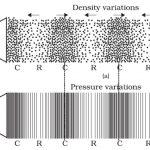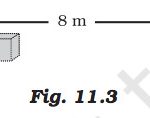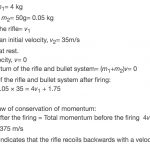Class 9 Science Chapter 13 Why do we fall ill NCERT Solutions Page 178 1. State any two conditions essential for good health. Answer: Health is a state of complete physical, mental and social well being. The two conditions essential for good health are 1) We need food for health and food will have to earn by doing work. For this, opportunity to do work has to … [Read more...] about Chapter 13 Why do we Fall ill ?
Science
Chapter 12 Sound
Class 9 Science Chapter 12 Sound NCERT Solutions Page 162 1. How does the sound produced by a vibrating object in a medium reach your ear? Answer: When an object vibrates it forces the neighbouring particles of the medium to vibrate. These vibrating particles then forces the particles adjacent to them to vibrate.In this way, vibrations produced by an vibrating objects … [Read more...] about Chapter 12 Sound
Chapter 11 Work and Energy
Class 9 Science Chapter 11 Work and Energy NCERT Solutions Question Answers, Page 148 1. A force of 7 N acts on an object. The displacement is, say 8 m, in the direction of the force (Fig. 11.3). Let us take it that the force acts on the object through the displacement. What is the work done in this case? Answer: Work done = Force × Displacement W= F × S W = … [Read more...] about Chapter 11 Work and Energy
Chapter 10 Gravitation
Class 9 Science Chapter 10 Gravitation NCERT Solutions Question Answers, Page 134 1. State the universal law of gravitation. Answer: This law states that every body in the universe attracts every other body with a force which is directly proportional to the product of their masses and inversely proportional to square of distance between them. F = G m1 m2 / … [Read more...] about Chapter 10 Gravitation
Chapter 9 Force and Law of Motion
Class 9 Science Chapter 9 Force and Law of Motion NCERT Solutions Question Answers Page 118 1.Which of the following has more inertia: (a) a rubber ball and a stone of the same size? (b) a bicycle and a train? (c) a five rupees coin and a one-rupee coin? Answer : Inertia is the measure of mass of the body.The greater is the mass of a body, greater is its … [Read more...] about Chapter 9 Force and Law of Motion


